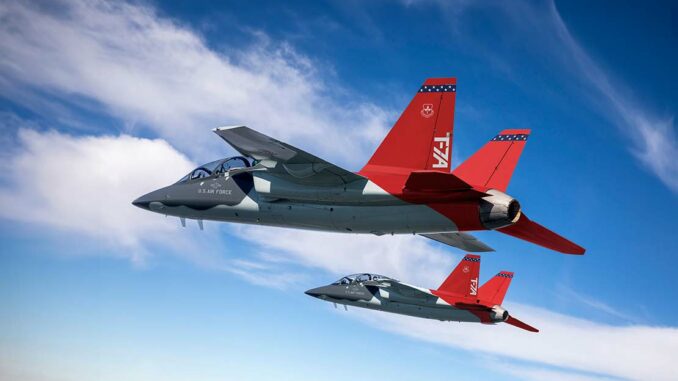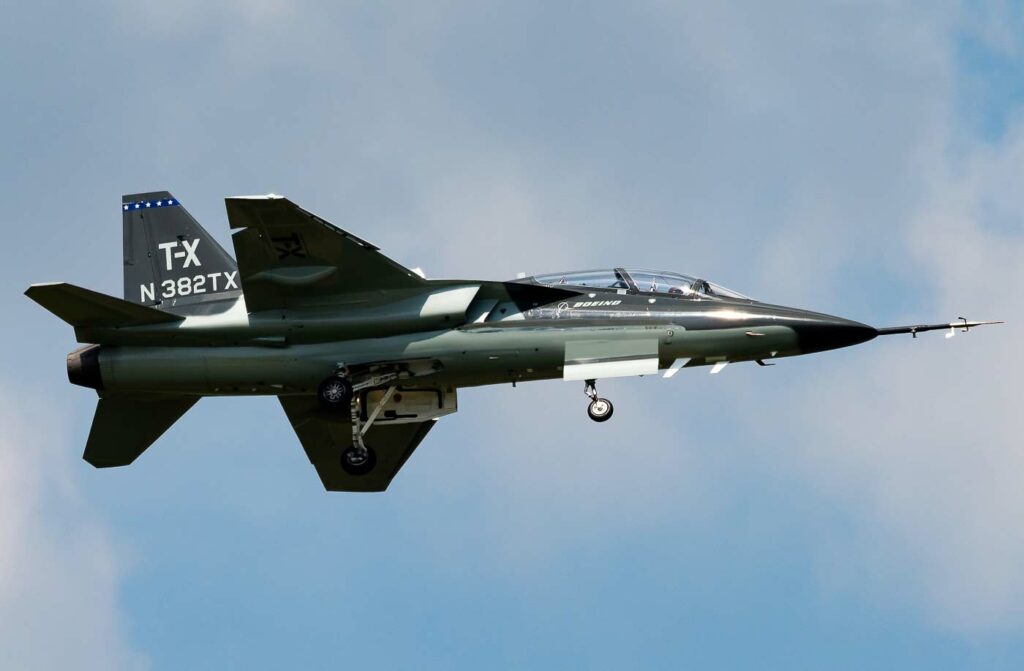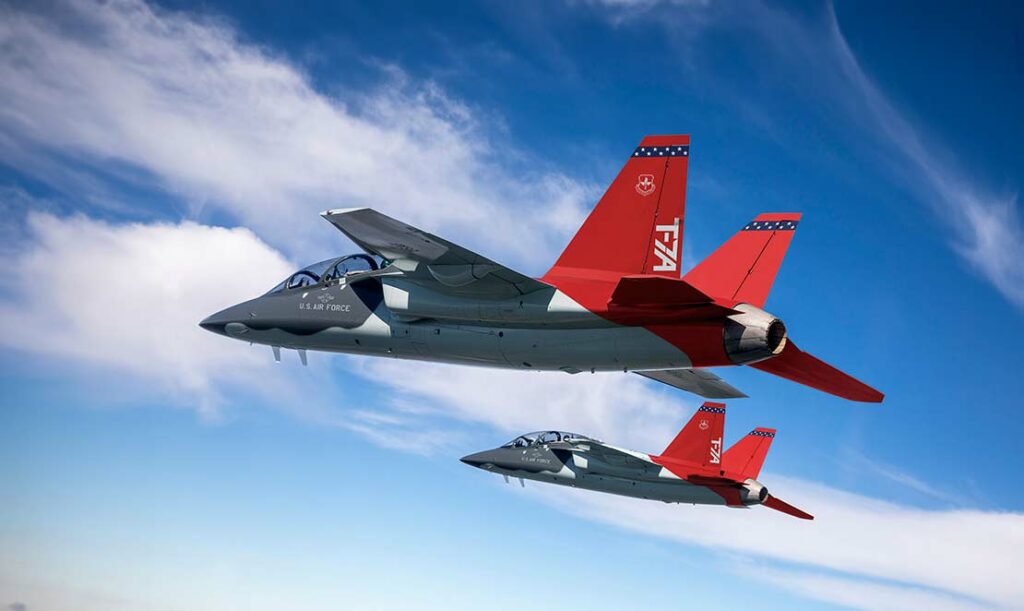
Japan plans to acquire the T-7 Red Hawk to strengthen cooperation with the USA and optimize pilot training costs.
The current global air defense context demands innovative and economically viable solutions for fighter pilot training. This article explores Japan’s decision to adopt the T-7A Red Hawk, developed by Boeing and Saab, as its next training aircraft, as part of a wider effort to strengthen military cooperation with the USA and optimize expenditure.

The importance of advanced training for fighter pilots
Fighter pilot training is a crucial element of combat readiness, requiring aircraft capable of simulating the challenges of modern missions. The Kawasaki T-4, although an excellent performer in years gone by, is no longer suited to today’s requirements, particularly in the face of technological advances and evolving threats.
Japan’s strategic choice of the T-7 Red Hawk
Japan’s decision to opt for the T-7A Red Hawk reflects a strategic vision focused on improving interoperability with the US Air Force. The aim is to harmonize equipment and operational protocols between the two countries, facilitating the conduct of joint operations and military exercises. By adopting the T-7A, an advanced training aircraft shared with the USAF, Japan ensures consistent training for its pilots, on an aircraft incorporating the latest technologies in avionics, mission simulation and flight performance, corresponding to NATO standards.
The integration of the T-7A also offers significant economies of scale. By participating in a joint procurement program, Japan benefits from lower unit costs for aircraft purchase, maintenance and spare parts, thanks to series production and the pooling of orders with the USA. This standardization helps to reduce operating costs and simplify logistics, offering a cost-effective solution for the renewal of the Japanese training fleet.
The framework for collaboration between Tokyo and Washington extends beyond the purchase of aircraft, envisaging co-development of a successor to the T-4. This initiative marks a further step in strengthening defense ties, enabling the sharing of technology and knowledge, and laying the foundations for future innovations in military aviation, particularly in the fields of artificial intelligence and autonomous systems. This strategic partnership underlines Japan’s commitment to aligning itself with the cutting-edge technologies and operational strategies of its allies, while optimizing its defense investments.
Operational and economic benefits of the T-7A Red Hawk
The adoption of the T-7A offers a number of advantages, such as reduced production and maintenance costs thanks to the standardization of training fleets between Japan and the United States. What’s more, the T-7 program already benefits from an established production line, promising efficient delivery of spare parts and robust logistical support.
International collaboration and technological development
The collaboration between Japan and the USA around the T-7 Red Hawk extends beyond aircraft procurement, encompassing the sharing and joint development of advanced technologies, particularly in the field of artificial intelligence (AI). AI can revolutionize pilot training by personalizing simulation scenarios, tailoring training programs to individual needs, and creating complex virtual environments that closely mimic real-world combat conditions. This approach enables pilots to be more effectively prepared for rapidly evolving, multi-dimensional threats.
The integration of AI in the development of combat drones and other autonomous systems offers promising prospects for enhancing offensive and defensive capabilities, by increasing the precision, responsiveness and efficiency of operations. This technological cooperation fosters the rapid emergence of innovative solutions, crucial to maintaining a strategic advantage in an increasingly complex regional security context, particularly in the face of China’s military expansion.
Impact on the Japanese defense industry
Although there are as yet no indications of local production of the T-7 in Japan, the involvement of Japanese industry in the program is conceivable. Such involvement could not only support the national economy, but also strengthen Japan’s autonomy in defense matters.

Future prospects
The T-7 program has experienced delays and technical challenges, but a Japanese commitment could serve as an important validation, boosting confidence in the aircraft. In addition, the potential Japanese order would mark a significant step forward in military and industrial cooperation between Japan and the USA, providing a common platform for advanced fighter pilot training.
Japan’s choice of the T-7 Red Hawk represents a strategic step in the evolution of its air force, responding to the need for advanced training adapted to future challenges. This partnership with the United States illustrates the importance of international cooperation in the development of sophisticated defense capabilities, while optimizing existing resources and infrastructures.
War Wings Daily is an independant magazine.